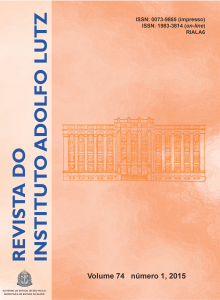Sodium contents in the processed milk consumed in Brazil
Keywords:
sodium, milk, inductively coupled plasma atomic emission spectrometry (ICP OES), Public Health
Abstract
Milk is considered an essential food to the human diet, especially for children; thus, it is crucial to guarantee the product quality, as the sodium contents control. High sodium consumption may afflict the health of population and it may be associated with Chronic Non communicable Diseases. This study aimed at determining the sodium contents in milks consumed in Brazil: whole pasteurized milk, pasteurized with 3 % fat, UHT and powdered milks, by using inductively coupled plasma optical atomic emission spectroscopy technique. The detected averages of sodium contents were higher for UHT milk, and a high variability between minimum and maximum contents was found for all types of milk. Furthermore, 37 % of analyzed samples showed sodium contents higher than those declared on the label, except the whole pasteurized milk. The sodium contents were consistent with the food composition tables, except for the sodium maximum value found in pasteurized milk containing 3 % fat. This study showed the importance of implementing the sodium monitoring programs for these products, and to recommend the establishment of a legal provision concerning the limits of sodium contents to the competent authorities, in view of promoting Public Health.
Published
2015-10-05
How to Cite
Buzzo, M. L., Carvalho, M. de F. H., Arakaki, E. E. K., Matsuzaki, R., Oliveira, C. C. de, & Kira, C. S. (2015). Sodium contents in the processed milk consumed in Brazil. Revista Do Instituto Adolfo Lutz, 74(1), 12-20. Retrieved from https://periodicoshomolog.saude.sp.gov.br/index.php/RIAL/article/view/33381
Issue
Section
ORIGINAL ARTICLE










